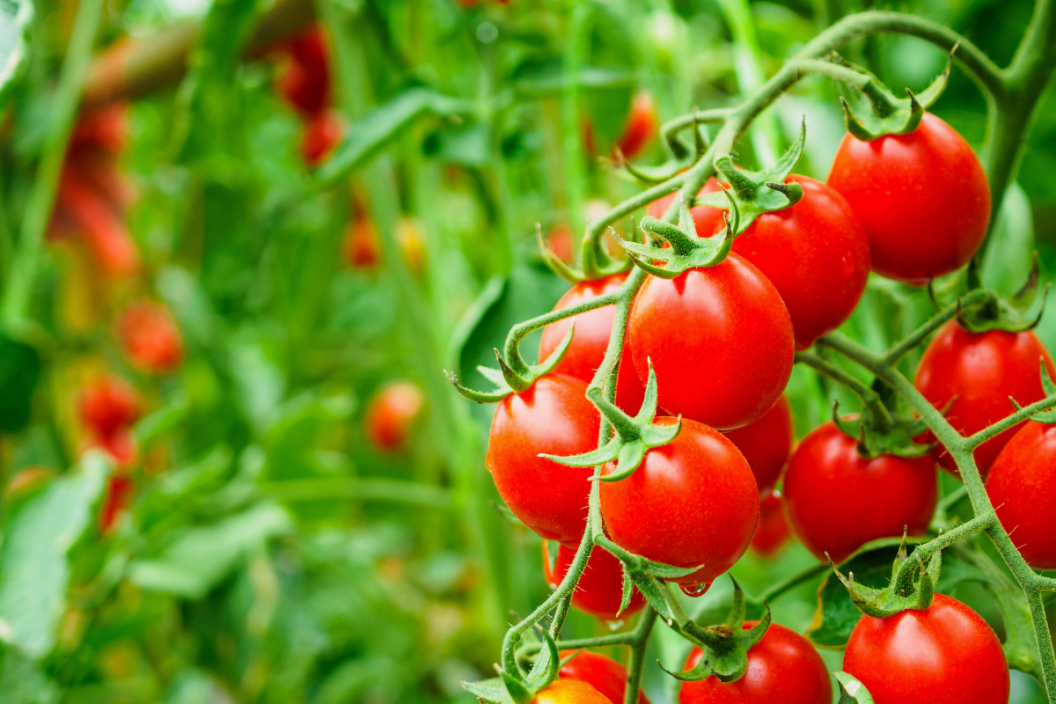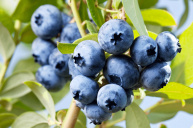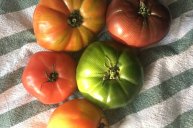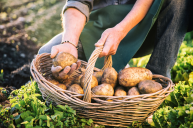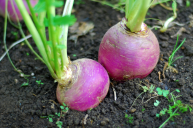Tomatoes are some of the summer's most beloved bounty. They are a staple at BBQs, in the form of burger toppings and salad ingredients, and make great additions to sandwiches and cold soups. They even work in a mason jar! Growing plant tomatoes in your own home or garden aren't very difficult, and tomato fruits are a wonderful addition to your homegrown vegetable garden.
Known scientifically as Solanum lycopersicum, the tomato is the berry of a plant from the nightshade family. Tomatoes originally came from Peru, where their Aztec name translated to "plump thing with a navel." Eventually, yellow ones made their way to Italy and got the Italian name pomodoro. Red varieties arrived, too, and the famous tomato sauce we know and love was created.
Here's everything you need to know if you plan to own tomatoes, from your first time mulching and seed starting, to fertilizing, pollination determination varieties. Get your potting mix ready.
1. Worldwide Crop
According to the USDA, Americans eat 22-24 pounds of tomatoes per person, per year. No, we aren't biting into them like apples. About half of that consumption comes in the form of ketchup and tomato sauce. China is the number one producer of tomatoes around the world with the U.S. coming in second with states like California and Florida.
In fact, forget the orange juice, Floridas growing season produces more tomatoes than any other state, especially in late summer.
2. Fruit, Not Vegetable
Even though tomatoes are categorized as a vegetable, they are technically a fruit because they contain tomato seeds and their plants bear fruit, while vegetables are edibles that contain stems, leaves or roots.
The confusion is actually the fault of the US government. In the 1890s, the supreme court wanted to charge a tax on tomato import so they changed the category and major food pyramid confusion was created.
3. They're Super Healthy
Tomatoes are the major dietary source of the antioxidant lycopene, which is linked to health benefits including a reduced risk of cancer and heart disease.
To get the most out of your home garden, make sure they are red. The redder the tomato, the more lycopene it contains. Cherry tomatoes are also a great source of lycopene, and though green tomatoes and yellow tomatoes do contain lycopene, it is in very small quantities.
4. The Varieties
There are over 10,000 varieties of tomato in colors including pink, purple, black, yellow and white and even striped. The most popular varieties, due to the hearty growth, are beefsteak tomatoes, slicing, and scarlet red.
While the varieties are plenty, the plants are only two: determinate tomatoes and indeterminate tomatoes. Determinate plants have a predetermined size, meaning once they reach a certain size they stop growing, no matter if it's near the spring frost date, early summer or late summer.
Indeterminate don't have a predetermined size. So, plants will continue to grow in height until winter. Many times, a freeze comes before all the tomatoes do, so this is best for growers with large spaces and moderate climate. Additionally, these are a good variety for growing tomatoes indoors.
Heirloom tomatoes come from tomato seedlings saved and grown for 50 years or more. They are passed down from farmer to farmer, generation to generation.
Hybrid tomato varieties tomatoes grown from two different plants to get the best of both varietals. Farmers will select two comparable plants and cross-breed them to create a new plant that features the best of both parent plants.
5. Sun v. Shade
Tomato plants need both a sunny spot and shade, just at different times. The full sun in the morning and sufficient natural light are necessary for four to six hours a day. If you're growing seeds indoors, a sunny window should be perfect for new growth.
Afternoon shade helps to cool the small tomatoes and prevent burning of leaves and staking.
6. Structure
Young tomato plants need a good root system and structure, much like we need a spine to help us stay upright. A trellis or fence is ideal in your garden center, to tie stems to help guide them in the upward growing direction to become ripe tomatoes. This helps create structure and promotes airflow which helps to prevent cage diseases or end rot.
Stakes are often a great starting system for new plants, but eventually, the larger they grow, the stronger the structure needs to be. Avoid wire tomato cages - they rarely work to support plant growth.
7. Space
https://www.instagram.com/p/BTjeFxigUyK/?tagged=tomatoes
In addition to sun, tomato plants need space, especially young plants. While you might think a small space is just fine in the beginning, little tomato plants become big ol' tomatoes so plan accordingly.
Be sure to plant adequate room between plants for air circulation so that they have room to spread their leaves and lower branches.
8. Get Deep
When you get your seedlings home, bury your tomato transplants deep into the garden soil up to their first real leaf if you can.
This encourages roots to develop all along the stem deep into the soil's organic matter. This, in turn, results in a stronger, high-quality plant.
9. Don't Leave the Leaves
Once your tomato plants reach about three feet in height, remove the true leaves from the bottom of the main stem.
These are the oldest leaves and they are usually the first leaves to develop fungal diseases.
10. Preheating Helps
Tomatoes love hours of sun and heat, which explains a lot when you consider that their ideal weather conditions most often occur in late summer with high humidity and plentiful soil moisture. Cover the planting area with black or red plastic a couple of weeks before you intend to plant.
Those extra degrees of soil warmth will translate into earlier tomatoes. Additionally, many indoor tomato gardeners will purchase a heat mat to stimulate growth in new tomato plants.
11. They're Official
Several states have a stake in tomatoes and tomato growing. They are the state vegetable of New Jersey and the state fruit of Ohio. Tomato juice is also Ohio's official juice. Planting tomatoes is basically a hobby.
Arkansas couldn't pick sides in the fruit/vegetable debate, so they declare a specific variety - the South Arkansas Vine Ripe Pink Tomato - as both the state fruit and state vegetable. We're guessing brunch in Arkansas is a happy time for Bloody Mary fans.
12. Making History
The world's largest tomato tree was grown in the experimental greenhouse at Walt Disney World Resort in Orlando, Florida.
It produced over 32,000 tomatoes in the first 16 months after it was planted, and holds the record for the most tomatoes in a single year, according to the Guinness Book of World Records. Also according to Guinness, the heaviest tomato weighed 3.51 kg (7 pounds, 12 ounces) and was grown by G. Graham in Oklahoma in 1986.
